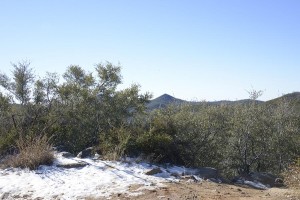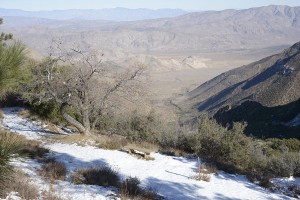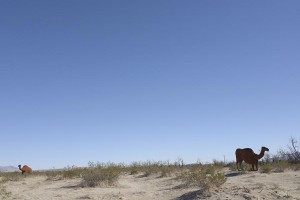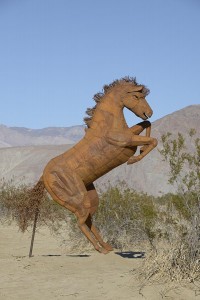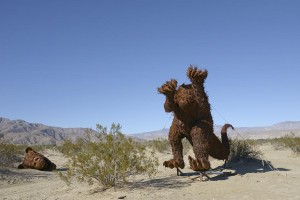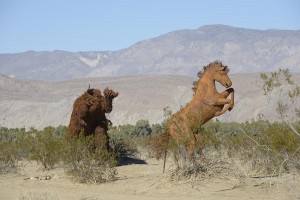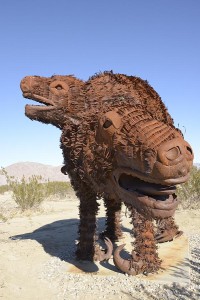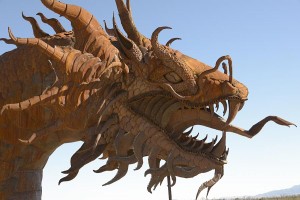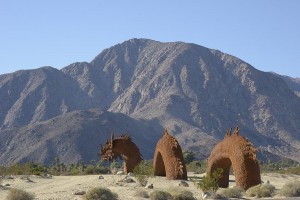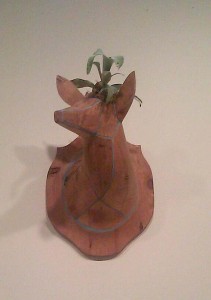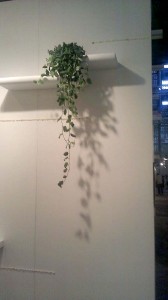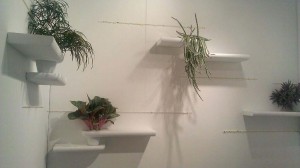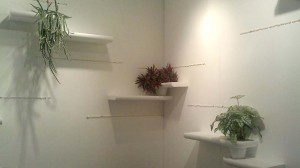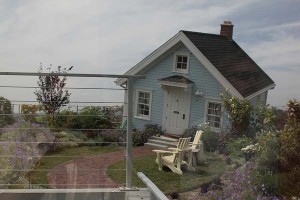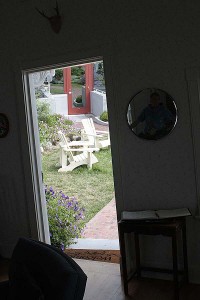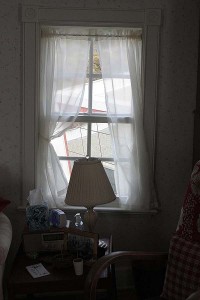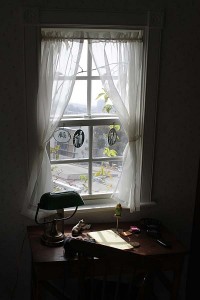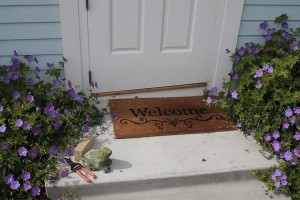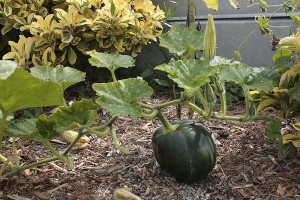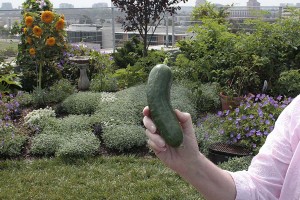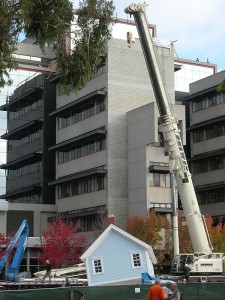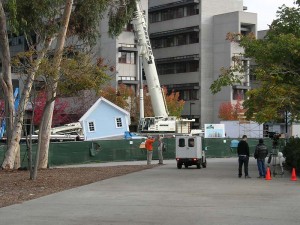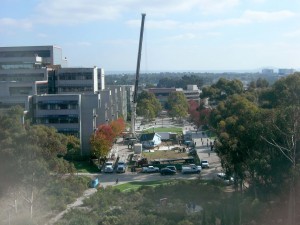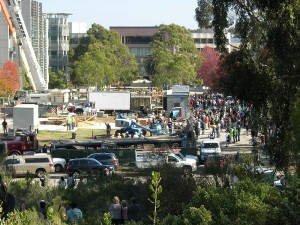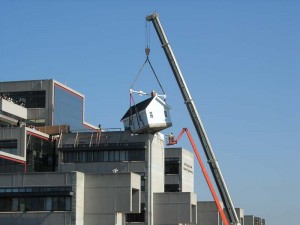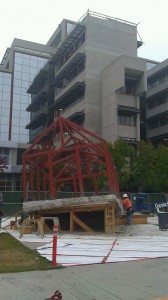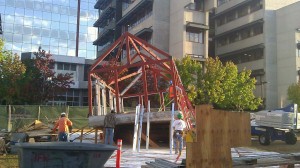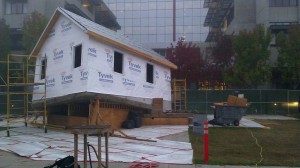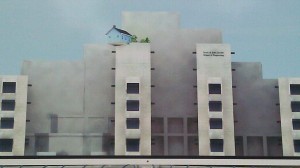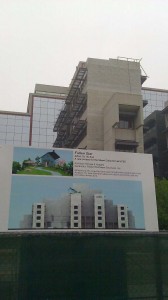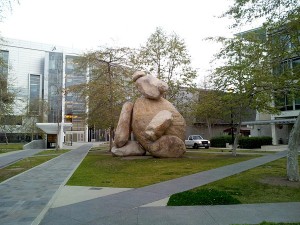
Here’s a fun artwork from the Stuart Collection at UCSD, Tim Hawkinson’s Bear. At almost 24 feet tall and 180 tons it’s a little bigger and heavier than your average Steiff bear, but it’s gotta be at least as cute.
It’s a pretty simple idea: take eight big to really big boulders and pile them together, just so. There’s a fair amount of engineering that keeps the piece from falling apart, but all the tech stays in the background. Nothing intrudes into the piece’s overscaled cuteness and child-like sense that anyone could assemble a few rocks together like this.
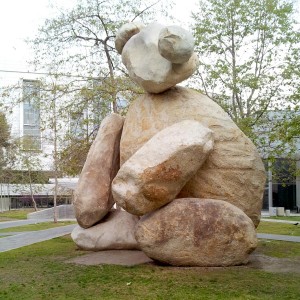
In our stats-obsessed world people will compare the piece’s “mere” 180 tons to the 340 ton mass of the monster rock that achieved superstar status as it got transported into downtown Los Angeles to become the central element in Michael Heizer’s Levitated Mass at the LA County Museum of Art. (You can read about the piece–and the rock–lots of places, including [ here ] on fellow blogger Ryan’s Dry Stone Gardening.) But, hey, 180 tons is already double the weight of a space shuttle, so I’ll allow myself to be impressed.
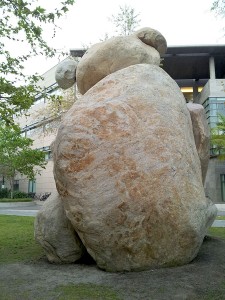
The stone comes from a quarry up in Pala, in the foothills about an hour to the northwest. It looks a lot like the boulders of our backcountry: smooth-surfaced, light-colored, with a warm rosy orange glow. A geologist once told me that at least some of the stone that makes up some of the adjacent formations is quartz monzonite, a felspar-rich mineral adjacent to granite on a family tree of plutonic rocks. But whatever it’s made out of, granite, quartz monzonite, it’s cool to have a big pile of big rocks from East County, remixed into a giant bear.
But one thing keeps bugging me about the work. The campus mascot of UC Berkeley, Cal, is the bear, and I keep wondering whether the artist got it wrong and thought that all the UC campuses had the same mascot. (San Diego’s is–lamentably–the tritons. Lame, but at least not insulting to many members of the population.) If this piece were transported to that northern campus I think it’d be an instant pet artwork and a big hit. So I keep wondering whether this site-specific artwork ended up at the wrong site. Very cute, but also very lost.

